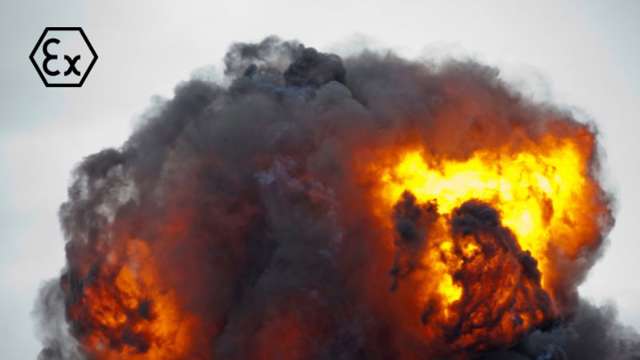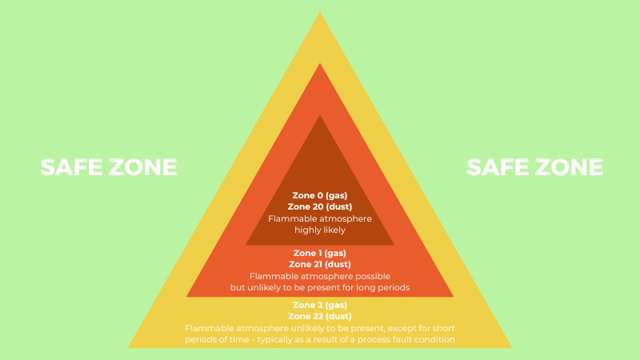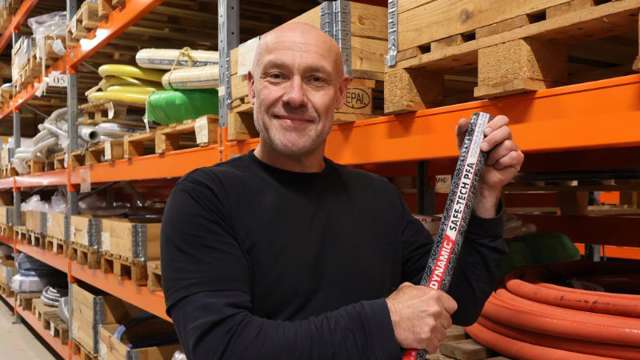Do you work with equipment or installations in potentially explosive environments?
Within the process industry, the ATEX directives play a crucial role in ensuring that equipment used in potentially explosive environments is designed and tested to withstand the hazardous conditions that can arise when flammable media are present. Ultimately, it is about employee safety and avoiding costly downtime in production.
In this updated mini guide, we provide you with a transparent and practical overview of:
- What ATEX actually covers
- Which rules and zones you need to be aware of
- Typical challenges companies face in ATEX environments
- Which ATEX-approved hoses customers choose
Read on and learn more!
What is ATEX?

ATEX is an abbreviation of ‘ATmosphères EXplosibles’ and refers to two EU directives that set out specific guidelines for the design, testing and maintenance of equipment and installations so that they can withstand potential hazards in explosive environments. The ATEX directives apply throughout the EU and form an essential part of safety regulations in the process industry, among others. Compliance with them is a legal requirement.
- ATEX 2014/34/EU focuses on requirements for equipment used in explosive atmospheres. This ensures that products are designed and manufactured to withstand the specific conditions that may arise in such environments. It includes criteria for the classification, testing and certification of equipment.
- ATEX 1999/92/EC addresses the working environment and the necessary measures that workplaces must implement to protect themselves against the risk of explosion. This involves assessing risks, drawing up safety procedures and ensuring that employees are properly trained.
Together, the directives ensure that both equipment and the working environment comply with the highest safety standards.
Why is ATEX important?

Compliance with the ATEX directives requires adherence to the relevant rules and standards for the specific equipment at the process plant. This means that the equipment must be ATEX-certified by approved bodies and meet the requirements applicable to the zone in which it is to be used. In addition, it is the company's responsibility to carry out ongoing inspection and maintenance of the equipment to ensure that it remains safe to use.

ATEX Zones: Classification and Risk Assessment
Overall, ATEX zones cover production areas where there is a risk of explosive atmospheres occurring. This could be in connection with the transport of grain or sugar, for example, or when working with other powder materials, granulates and chemical compounds.
The zone designations for gases include:
- Zone 0: Area where an explosive atmosphere consisting of a mixture of air and flammable gas, vapour or mist may be present continuously, frequently or for long periods of time.
- Zone 1: Area where, during normal operation, an explosive mixture of air and flammable gas, vapour or mist may occasionally occur.
- Zone 2: Area where, during normal operation, an explosive atmosphere consisting of a mixture of air and flammable gas, vapour or mist is unlikely to occur. If it does occur, it will only be for a short period of time.
The zone designations for dust and liquid mists include:
- Zone 20: Area where an explosive atmosphere consisting of a cloud of combustible dust and air may be present continuously, frequently or for long periods of time.
- Zone 21: Area where, during normal operation, an explosive atmosphere consisting of a cloud of combustible dust and air may occasionally occur.
- Zone 22: Area where, during normal operation, an explosive atmosphere consisting of a cloud of combustible dust and air is unlikely to occur. If it does occur, it will only be for a short period of time.
Typical challenges in ATEX environments
Through our many years of experience with customers working with ATEX installations, we often encounter the same challenges, especially in the chemical industry. Typical challenges include, among other things,:
- Incorrect selection of hoses that do not match the zone or temperature
- Static electricity that creates a fire hazard
- Material degradation by aggressive media
- Inadequate documentation, which causes challenges during audits
- Operational downtime when hoses wear out or are not zone-adapted
ATEX installations place high demands on both equipment and documentation, and even small errors in the choice of hose type, materials or maintenance can quickly develop into safety risks or costly downtime. A systematic approach to zone classification, material resistance and ongoing monitoring is therefore important to ensure stable operation and full compliance in potentially explosive environments.
Customers' ATEX favourites

ATEX-approved hoses can be found in our webshop under the categories chemical hoses, Teflon tubes and hoses, and polyurethane hoses. What they have in common is that they are designed to meet the strict safety standards required in explosive atmospheres. But which of these models have been our customer favorites over the past year? We analyzed sales data and feedback to understand which specifications and features customers value most.
ChemForce ATEX – universal hose in corrugated PTFE and stainless steel braid
ChemForce ATEX combines chemical resistance, antistatic properties and a wide temperature tolerance from −73°C to +260°C. Its flexible construction makes it suitable for both CIP/SIP processes and the handling of food and pharmaceutical products in potentially explosive atmospheres. Fully approved for all ATEX zones.
Prochim SPL/10-UPE - suction and pressure hose for demanding chemical applications
With a UPE liner and wear-resistant EPDM outer layer, Prochim SPL/10-UPE is transparent both for aggressive media and mechanical stress. With its ATEX approval for all zones and high operational reliability, it is a safe choice for tankers and stationary installations in the chemical industry.
Dynamic Safe-Tech – pharmaceutical hose for flammable and cosmetic products
Dynamic Safe-Tech has been developed for applications with explosion risk. The inner PFA liner combined with an antistatic EPDM layer ensures effective discharge. Temperature tolerance from −20°C to +65°C makes it particularly suitable for cosmetics, cleaning agents and alcohol-based products.
Maniflon/SD-PTFE - Chemical hose with black, antistatic PTFE coating
Maniflon/SD-PTFE is fully electrically conductive and designed for the safe transport of aggressive chemicals and pharmaceutical products. The EPDM-protected exterior provides high abrasion resistance and weather resistance, while the hose construction makes it suitable for both CIP and steam up to 150°C for short periods. A reliable choice in potentially explosive atmospheres.
Comparison – which hose should you choose?
| Requirement | Recommended hose | Why |
| High temperatures | ChemForce ATEX | Withstands -73°C to +260°C, antistatic and chemical resistant. |
| Handling multiple types of chemicals | Prochim SPL/10-UPE | UPE liner + EPDM outer layer, ATEX approved for all zones. |
| Effective dissipation of static electricity | Dynamic Safe-Tech | Antistatic PFA/EPDM construction, ATEX approved for all zones. |
| Aggressive chemicals + high wear resistance | Maniflon/SD-PTFE | Antistatic PTFE, wear-resistant EPDM, withstands 150°C steam for short periods. |
Configure your own ATEX hose solution online
Are you already thinking about your next ATEX hose solution for production, but don't know where to start? With our online hose configurator, you can quickly and easily configure your very own ATEX hose solution based on your desired specifications. And if you don't want to order right away, you can always send a non-binding enquiry instead. We will then contact you as soon as possible.
Here are 5 good reasons to try our online hose configurator:
➡️ Wide range of ATEX-approved hoses
➡️ Coupling rotations in 45-degree intervals
➡️ See dimensional sketches for hose couplings
➡️ Make a non-binding enquiry or place an order
➡️ Available 24/7
 da
da
 de
de
 en
en
 sv
sv
